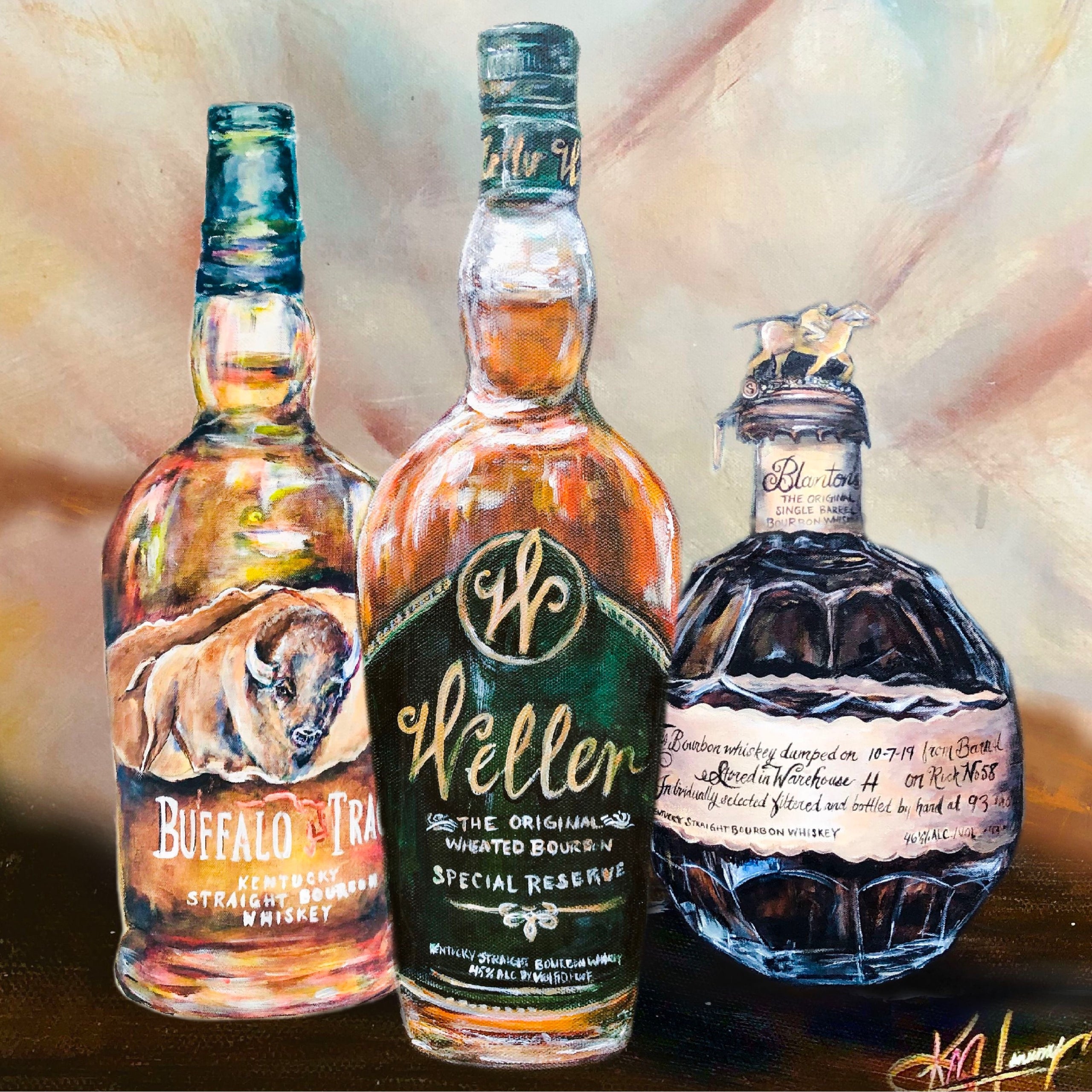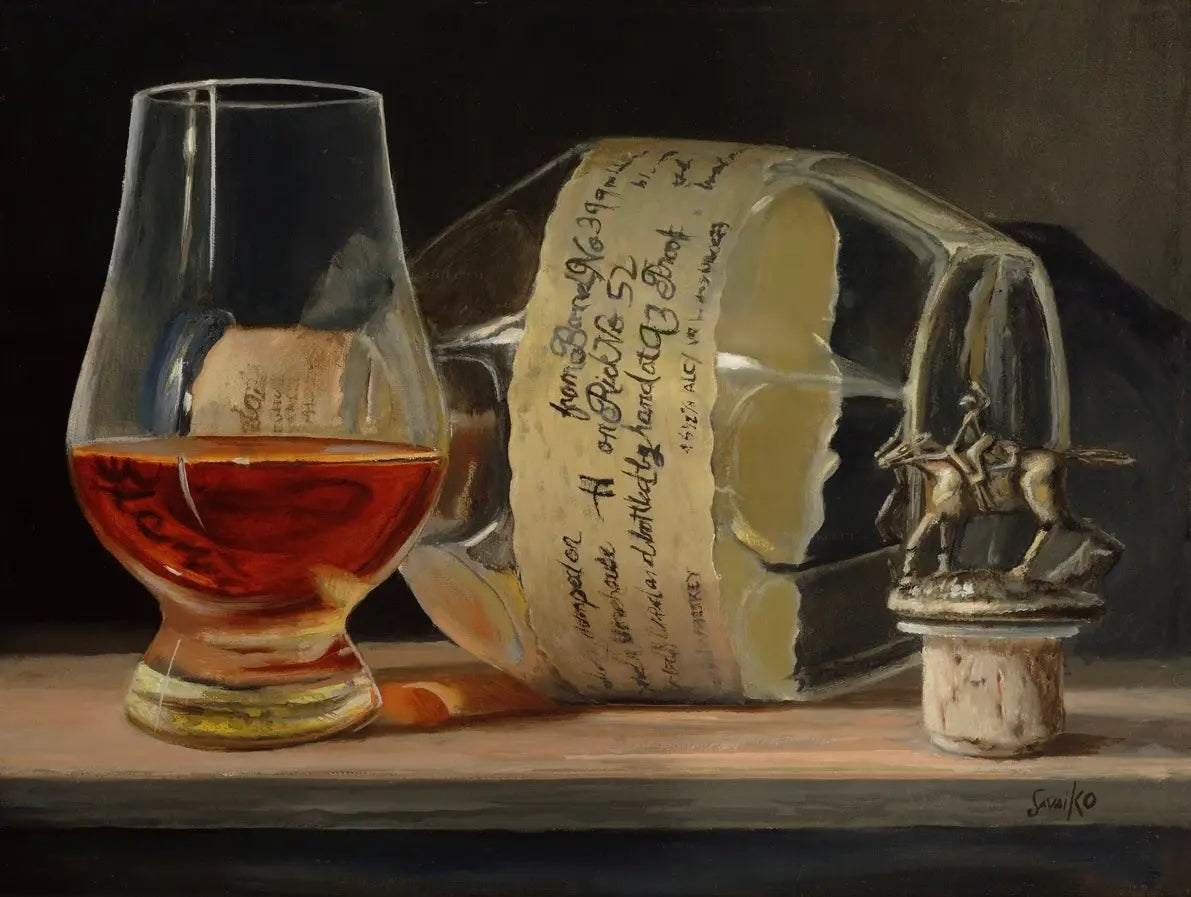Whiskey Art: Catching the Significance of Distillation in Every Brushstroke
Whiskey Art: Catching the Significance of Distillation in Every Brushstroke
Blog Article
The Significance of Whiskey Art in Celebrating Heritage and Workmanship in the Beverage Sector
The complex partnership between bourbon art and the celebration of heritage and workmanship within the beverage industry can not be overemphasized. With attentively made tags and bottles, whiskey brands encapsulate their historical origins and the artisanal abilities that define their production approaches.
The Historical Roots of Whiskey
At the heart of bourbon's appeal exists an abundant tapestry of historical roots that trace back to ancient worlds. The origins of scotch can be linked to the purification techniques of the Sumerians and Babylonians around 2000 BCE, where very early kinds of fermented grain beverages started to emerge. It was in the Middle Ages that the art of distillation progressed considerably, particularly in Ireland and Scotland, leading to the creation of whiskey as we know it today.
The term "bourbon" itself originates from the Gaelic word "uisce beatha," indicating "water of life." This phrase underscores the cultural relevance of bourbon in Celtic societies, where it was often related to routines, events, and public bonding. By the 15th century, purification became a recognized craft within monastic areas, leading the way for the establishment of lawful distilleries.
As profession paths expanded, whiskey's appeal grew, going beyond regional borders and capturing the passion of connoisseurs worldwide. Bourbon Art. This historical trip reflects not only the workmanship behind whiskey manufacturing yet also its indispensable role in social and social contexts, marking it as a substantial drink throughout history
Artistic Expression in Branding
Scotch branding stands as an engaging intersection of creativity and commerce, where aesthetic identity plays a vital function in forming consumer assumption. The appearances of whiskey labels, packaging, and advertising and marketing products mirror not just the brand's tale but also its core worths and heritage. Via imaginative expression, distilleries communicate a story that resonates with consumers, stimulating feelings and stimulating connections.
The use of shade, typography, and imagery in branding serves to separate products in a saturated market. Traditional motifs may stimulate a sense of credibility and workmanship, while contemporary styles can indicate development and forward-thinking. This calculated creative direction boosts brand acknowledgment and loyalty, permitting customers to forge an individual relationship with the whiskey they pick.
Moreover, creative expression in branding often serves as an event of regional heritage. Distilleries frequently include local signs or historic recommendations into their designs, creating a local color that welcomes consumers to take part in a more comprehensive cultural experience. Inevitably, the creativity behind whiskey branding not just improves visual charm yet additionally enhances the general story of the brand, fostering a much deeper appreciation for the craftsmanship and heritage embedded in each container.
Workmanship in Container Design
The artistry noticeable in whiskey branding prolongs past aesthetic identification to include the craftsmanship involved in bottle layout. Each container works as a vessel not simply for the spirit within, but also for the story it tells regarding its quality, beginning, and custom. The style process needs thorough interest to information, as elements such as product, form, and closure contribute dramatically to the visit this website total perception of the scotch.
Workmanship in container design involves picking top quality glass that can boost the bourbon's shade and quality, while likewise providing a responsive experience for the customer. The silhouette of the container must be both cosmetically enticing and functional, frequently mirroring the heritage of the brand name. Numerous distilleries choose one-of-a-kind forms or printed logo designs that stimulate a feeling of authenticity and history.
Moreover, the label layout and typography play a crucial role in communicating the brand name's narrative. Whiskey Art. A well-crafted container not only captivates the customer's eye however also reinforces the brand name's dedication to quality and custom. In this way, the craftsmanship of bottle design becomes an important facet of the scotch experience, combining creativity with a profound regard for heritage
Cultural Significance of Bourbon Art
Celebrating custom and workmanship, the cultural importance of whiskey art transcends simple aesthetic appeals, intertwining with the historic and social stories of the areas from which it originates. Each bottle serves as a canvas, depicting the one-of-a-kind tales, folklore, and traditions that have actually formed local whiskey-making methods. The intricate designs often show the heritage of the distillers, including signs and motifs that reverberate with the culture and worths of their neighborhoods.

Additionally, whiskey art plays an essential function in communal gatherings and events, acting as a concrete web link in between people and their shared experiences. By appreciating the artistry in scotch packaging, customers grow a much deeper understanding and respect for the craft, inevitably improving their enjoyment of the beverage itself.
Modern Trends in Bourbon Presentation
Over the last few years, the presentation of scotch has actually evolved to mirror contemporary preferences and trends while still recognizing traditional workmanship - Whiskey Art. Distilleries are significantly focusing on visual aspects that enhance the general drinking experience, linking the space between heritage and modernity
Innovative container styles have emerged, frequently incorporating lasting products and artistic tags that tell engaging stories. Numerous brand names currently work together with neighborhood artists, instilling their products with unique aesthetic expressions that reverberate with customers. Furthermore, limited-edition launches are frequently packaged in collectible containers, adding value and charm for connoisseurs.

Verdict
In verdict, whiskey art acts as a vital conduit for sharing the heritage and craftsmanship fundamental in the drink industry. With elaborate branding, ingenious container styles, and culturally substantial creative components, bourbon brand names properly honor their traditions and link with customers. This imaginative story not just raises the admiration have a peek at this website of bourbon however additionally reinforces area identification and satisfaction among producers. Eventually, scotch art plays a crucial duty in preserving and commemorating the rich cultural tapestry of whiskey-making.


Workmanship in container design includes selecting high-quality glass that can enhance the bourbon's color and clearness, while also offering a tactile experience for the consumer. In this way, the workmanship of container design becomes a vital aspect of the scotch experience, merging artistry with a profound regard for heritage.
In verdict, whiskey art offers as a vital conduit for expressing the heritage and craftsmanship inherent in the beverage industry.
Report this page